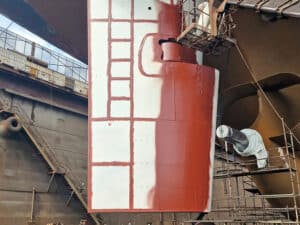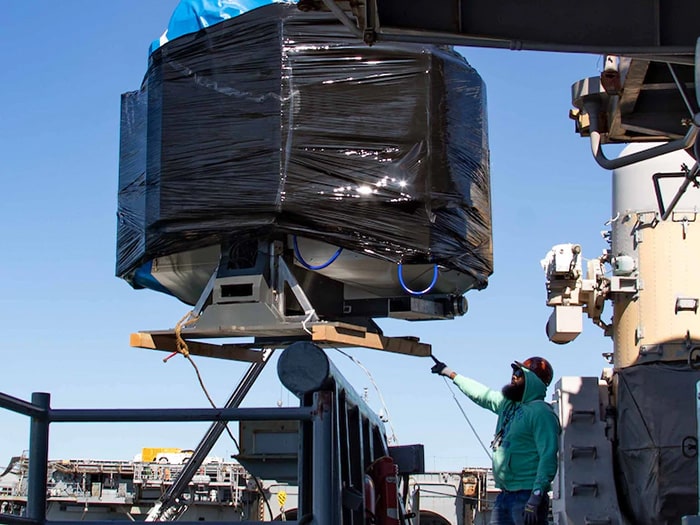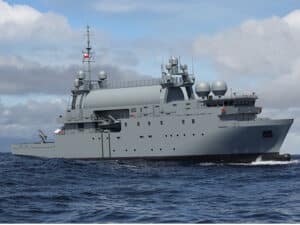
Navy installs a metal 3D printer in LHD 5
Written by Nick Blenkey
The 3D metal printer comes on board USS Bataam [Photo: Navsea]
USS Bataan (LHD 5) this month became the first ship in the Navy to have a metal 3D printer permanently installed aboard. The installation advances the Navy efforts to improve self-sufficiency for deployed ships and their crews and reduce supply chain lead times by leveraging additive manufacturing (AM).
The introduction of additive manufacturing (AM) into naval operations supports readiness and self-sufficiency,” said Rear Adm. Brendan McLane, commander, Naval Surface Force Atlantic.
Additive manufacturing (AM) – more commonly known as 3D printing – is the process of joining materials to make parts from 3D model data, usually layer upon layer, as opposed to subtractive manufacturing and formative manufacturing methodologies. Whether creating a quality of life item or a sophisticated machine part, AM facilitates production at the point-of-need when time and operational availability matter.
The equipment, installed under a joint effort between Commander, Naval Surface Force Atlantic and Naval Sea Systems Command (NAVSEA) Technology Office, includes the Phillips Additive Hybrid system, which integrates a Meltio3D laser metal wire deposition head on a Haas TM-1 computer numerical control mill. The Haas TM-1 platform has been proven to operate reliably in an afloat environment aboard several aircraft carriers. Integrating the Meltio3D deposition head with the Haas TM-1 provides both an additive and subtractive manufacturing capability within the same system, increasing efficiency and reducing waste when compared with typical machining.
The Phillips Additive Hybrid system prints 316L stainless steel, a material prevalent in U.S. Navy ship systems. While stainless steel additive manufacturing onboard naval ships is new, it also marks a step forward in providing sailors with industrial-level manufacturing capabilities, enabling them to print not widely available individual parts for systems, avoiding having to procure the entire system at significantly greater cost.
The 3D printer’s benefits are twofold – it works to maximize operational availability and reduces the demand on traditional and Navy-specific supply chains.
Additionally, NAVSEA engineers installed a second 3D printer to produce polymer (plastic) components onboard Bataan. This printer enables the ship’s crew to print any of the NAVSEA developed 300+ AM Technical Data Packages that define the required design configuration and procedures to manufacture a part and ensure it performs properly.
“These printers have the ability to help the Navy overcome both obsolescence issues for ships and systems that have service lives measured in decades and directly contribute to enhanced operational availability of our systems and ships,” said NAVSEA Chief Engineer, Rear Adm. Jason Lloyd.




